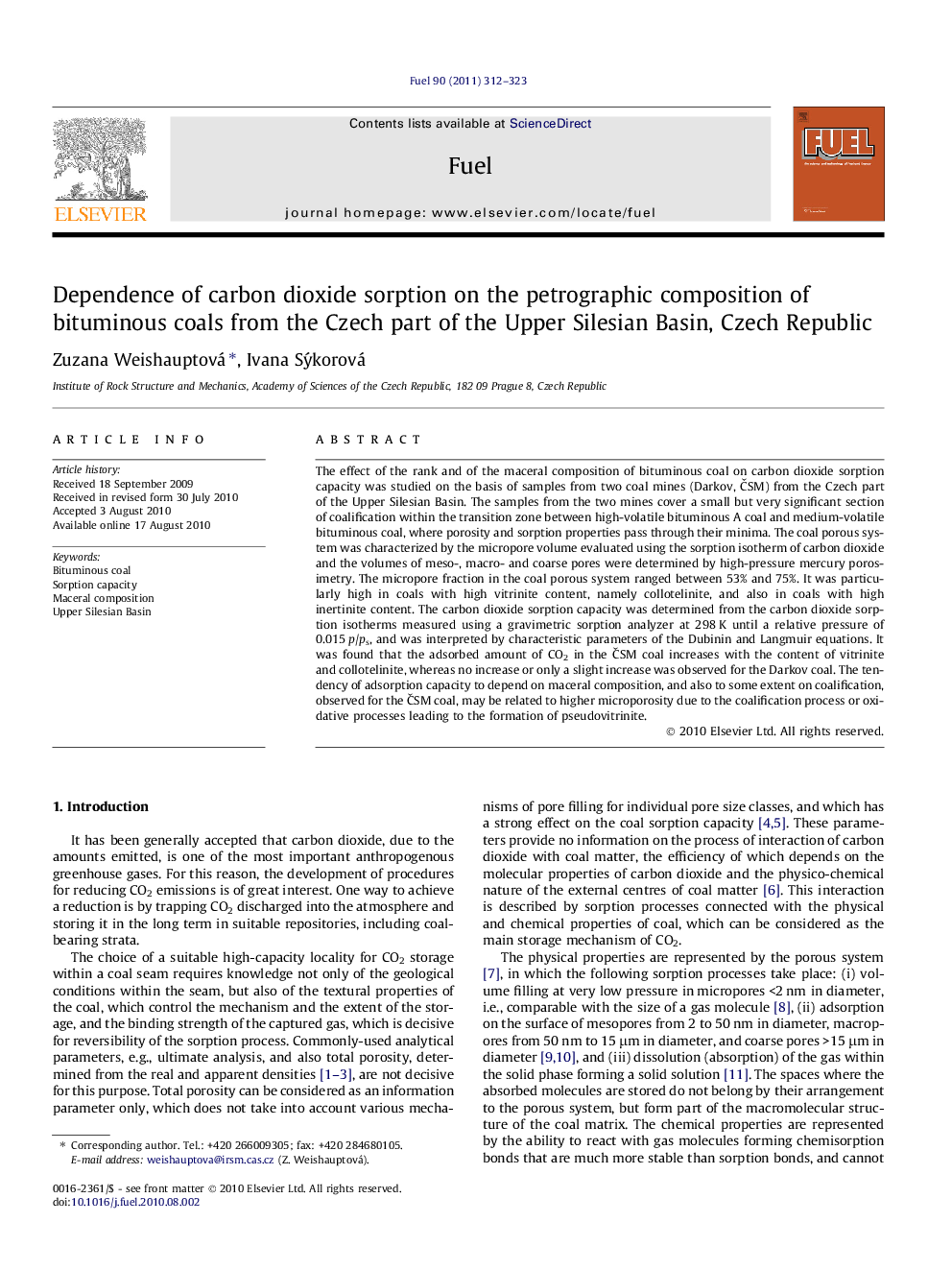| Article ID | Journal | Published Year | Pages | File Type |
|---|---|---|---|---|
| 206966 | Fuel | 2011 | 12 Pages |
The effect of the rank and of the maceral composition of bituminous coal on carbon dioxide sorption capacity was studied on the basis of samples from two coal mines (Darkov, ČSM) from the Czech part of the Upper Silesian Basin. The samples from the two mines cover a small but very significant section of coalification within the transition zone between high-volatile bituminous A coal and medium-volatile bituminous coal, where porosity and sorption properties pass through their minima. The coal porous system was characterized by the micropore volume evaluated using the sorption isotherm of carbon dioxide and the volumes of meso-, macro- and coarse pores were determined by high-pressure mercury porosimetry. The micropore fraction in the coal porous system ranged between 53% and 75%. It was particularly high in coals with high vitrinite content, namely collotelinite, and also in coals with high inertinite content. The carbon dioxide sorption capacity was determined from the carbon dioxide sorption isotherms measured using a gravimetric sorption analyzer at 298 K until a relative pressure of 0.015 p/ps, and was interpreted by characteristic parameters of the Dubinin and Langmuir equations. It was found that the adsorbed amount of CO2 in the ČSM coal increases with the content of vitrinite and collotelinite, whereas no increase or only a slight increase was observed for the Darkov coal. The tendency of adsorption capacity to depend on maceral composition, and also to some extent on coalification, observed for the ČSM coal, may be related to higher microporosity due to the coalification process or oxidative processes leading to the formation of pseudovitrinite.
